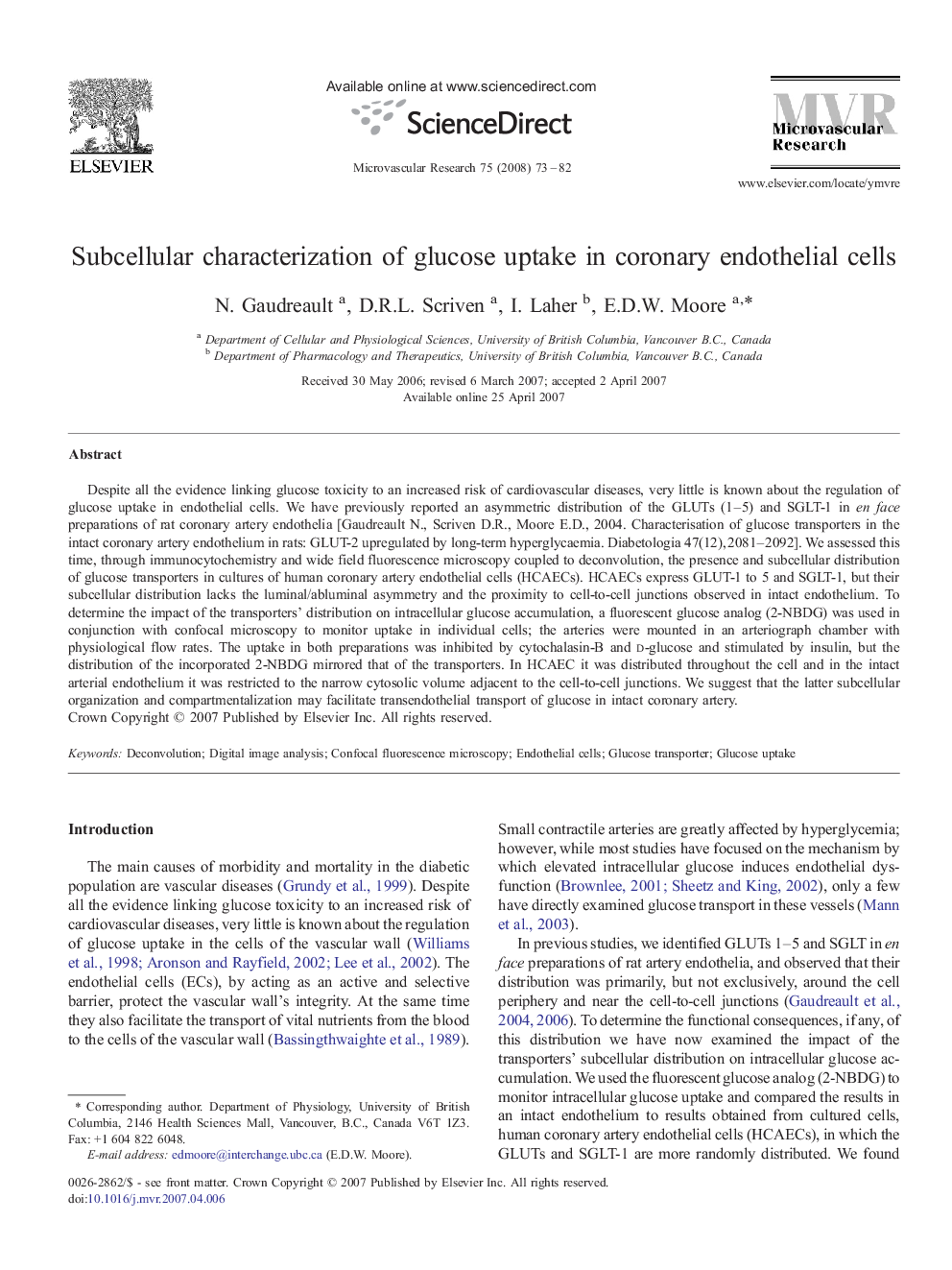| Article ID | Journal | Published Year | Pages | File Type |
|---|---|---|---|---|
| 1995260 | Microvascular Research | 2008 | 10 Pages |
Despite all the evidence linking glucose toxicity to an increased risk of cardiovascular diseases, very little is known about the regulation of glucose uptake in endothelial cells. We have previously reported an asymmetric distribution of the GLUTs (1–5) and SGLT-1 in en face preparations of rat coronary artery endothelia [Gaudreault N., Scriven D.R., Moore E.D., 2004. Characterisation of glucose transporters in the intact coronary artery endothelium in rats: GLUT-2 upregulated by long-term hyperglycaemia. Diabetologia 47(12),2081–2092]. We assessed this time, through immunocytochemistry and wide field fluorescence microscopy coupled to deconvolution, the presence and subcellular distribution of glucose transporters in cultures of human coronary artery endothelial cells (HCAECs). HCAECs express GLUT-1 to 5 and SGLT-1, but their subcellular distribution lacks the luminal/abluminal asymmetry and the proximity to cell-to-cell junctions observed in intact endothelium. To determine the impact of the transporters' distribution on intracellular glucose accumulation, a fluorescent glucose analog (2-NBDG) was used in conjunction with confocal microscopy to monitor uptake in individual cells; the arteries were mounted in an arteriograph chamber with physiological flow rates. The uptake in both preparations was inhibited by cytochalasin-B and d-glucose and stimulated by insulin, but the distribution of the incorporated 2-NBDG mirrored that of the transporters. In HCAEC it was distributed throughout the cell and in the intact arterial endothelium it was restricted to the narrow cytosolic volume adjacent to the cell-to-cell junctions. We suggest that the latter subcellular organization and compartmentalization may facilitate transendothelial transport of glucose in intact coronary artery.
